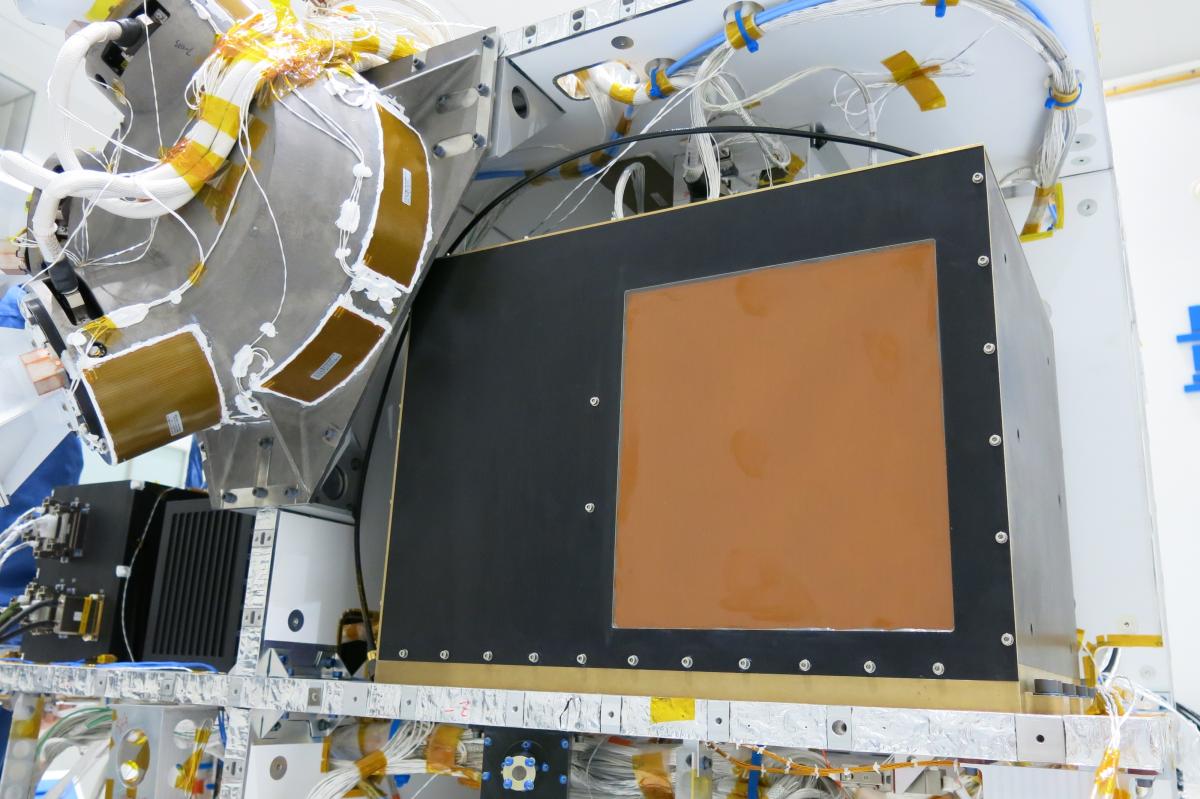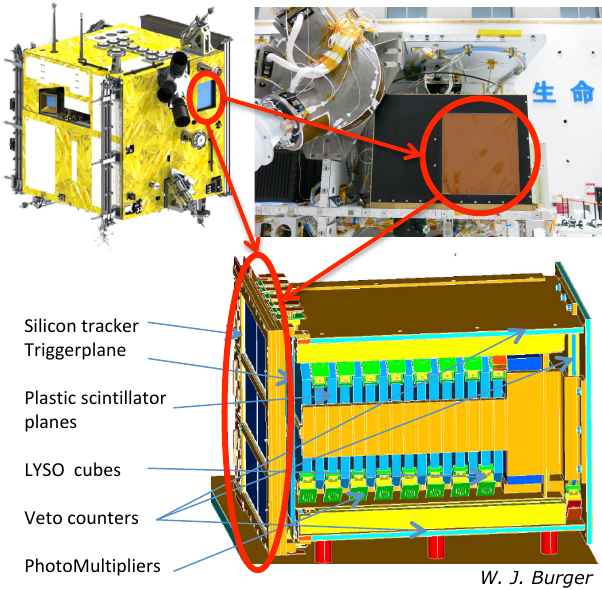The High-Energy Particle Detector (HEPD-01), developed by the Italian Collaboration, detects electrons, protons and light nuclei. The main objective is to measure the increase of the electron and proton fluxes due to short-time perturbations of the radiation belts caused by solar, terrestrial and anthropic phenomena. The energy range explored is 3 – 100 MeV for electrons and 30 – 200 MeV for protons.
The instrument consists of several detectors. Two planes of double-side silicon microstrip sensors placed on the top of the instrument provide the direction of the incident particle. Just below, two layers of plastic scintillators, one thin segmented, give the trigger; they are followed by a calorimeter, constituted by other 16 scintillators and a layer of LYSO sensors. A scintillator veto system completes the instrument. The power supply and electronics are inserted in a box placed at one side of the detector. The HEPD is contained in an aluminum-honeycomb box.
Four different models have been realized and fully tested: Electrical Model (EM), Structural and Thermal Model (STM), Qualification Model (QM) and Flight Model (FM).
HEPD-01 FM Tests on CSES Satellite
The HEPD-01 Flight Model was shipped to China on December 16th, 2016 and delivered to DFH Satellite Co, Ltd in Beijing on December 30th, 2016.
At the end of December 2017, the satellite was transferred to the launch site, Jiuquan Satellite Launch Center in the Gobi desert (Inner Mongolia), for the pre-launch test activities.
On February 2nd, 2018, the CSES-01 satellite has been launched, and it is currently in operation.


HEPD-01 FM on CSES-01 Satellite
Main parameters of HEPD-01